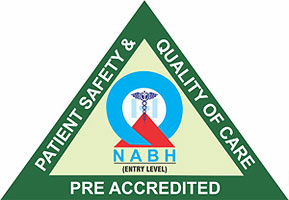Dr. Niteen Dedhia
November 29, 2021 | Author: Admin
November 29, 2021
Introduction
Refractive errors occur when there is no image formation on the retina. The image may either form in front of the retina, as in nearsightedness, or on the back of the retina, as in farsightedness. LASIK surgery, also known as Laser-assisted in situ keratomileuses, is the option to correct the refractive errors. The risks associated with the procedure are rare. Every year millions of people worldwide undergo this surgery to get rid of their glasses and contact lenses.
Lasik Surgery
LASIK surgery is one of the most common eye surgeries. The doctor performs this procedure to treat several refractive errors, such as nearsightedness (myopia), farsightedness (hyperopia), and astigmatism. The procedure removes the eyeglasses or contact lenses. The surgery involves the reshaping of the cornea with the help of LASER.
Procedure Involved In Lasik Surgery
The total time for the procedure is around 30 minutes. The doctor advises you to sit on the inclining chair. The procedure involves the following steps:
- Anesthesia: The doctor may also administer medicine in case you feel nervous. Once you are settled, the doctor places the anesthetic drop into your eyes. This will prevent any pain or irritation during the procedure.
- Placing the ring: The doctor positions your eyes under the LASER and places the ring into your eyes to keep them open during the procedure. You may have a dim vision while surgery.
- Flap creation: LASIK surgery requires the creation of a corneal flap. The doctor guides a special LASER, known as femtosecond LASER, to create a circular and thin corneal flap. The patient may have slight irritation during flap creation. Many patients complain of eye pressure during this step. The flap creation helps the ophthalmologists to excess to that part of the eye that requires reshaping.
- Corneal reshaping: Another special LASER, known as excimer reshapes the cornea. The excimer LASER instrument is connected to the computer. It takes the preloaded map of your eyes and makes the necessary changes in the corneal tissue. While the excimer works on the corneal tissues, you may also have a smell of burning tissue or hairs. It is normal during corneal reshaping. You may also hear the clicking sound that indicates that the LASER is working on the cornea.
- Repositioning the flap: The doctor smoothly replaces the corneal flap into its position after the excimer reshapes the cornea according to the preloaded map. There is no need for stitches or other processes as the cornea can heal on its own.
- Second eye surgery: If you have LASER surgery for another eye, the doctor may perform it immediately after the first eye surgery with a similar procedure.
- After surgery: After completing the surgery, the doctor will provide an eye shield to protect your eyes from moisture and pollution. It will also help to avoid any accidental rubbing of the eyes.
- Discharge: The doctor will evaluate your eye after the surgery and discharge you the same day with a set of instructions and schedule the follow-up visits.



